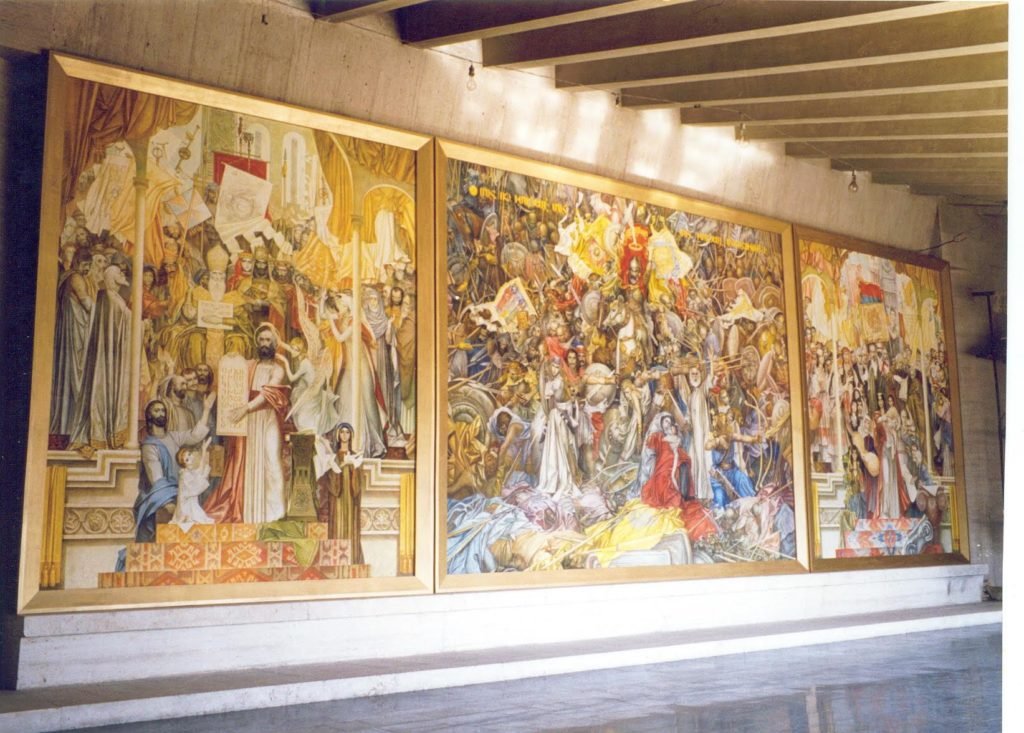
On display inside the Khanjyan Gallery at Cafesjian Center for the Arts in Yerevan, there is a towering triptych mural documenting Armenia’s history. It’s considered Grigor Khanjyan’s most famous masterpiece—one that triumphed against all odds.
Khanjyan was born on November 29, 1926 in Yerevan. His father Sepuh hailed from Yerznka and Van, where he had befriended Armenian painter Panos Terlemezian.
Khanjyan’s passion for art was evident from early on. When he was 19 years old, he graduated with his first art degree from Yerevan State College of Fine Arts, now named after Terlemezian. He would later achieve another degree from the State Academy of Fine Arts.
Khanjyan began building his career at a young age, illustrating for different magazines while studying. “In general, he loved to work. He wasn’t a lazy person,” said his daughter Seda Khanjyan in a recent interview with the Weekly. She said that her father’s generation of artists was the first to receive their education in Armenia, by Armenian artists.
During a reunion in Yerevan, Sepuh Khanjyan asked his friend Terlemezian what advice he would give to his son, an aspiring painter. “If he is persistent and patient, he will become a painter,” replied Terlezmezian. And so it was.
Grigor Khanjyan’s reputation in the art world grew quickly, qualifying him for awards at a young age. “He became accepted as an artist,” said Seda Khanjyan, a scientific researcher and curator in the department of graphic art at the National Gallery of Armenia. “They recognized him and loved him, not only here [in Armenia] but in Russia as well.”
In 1966, Khanjyan was selected as a member of the Religious and Architectural Council of the Mother See of Holy Etchmiadzin, while Vazgen I was serving as the Catholicos of All Armenians; the two became close.

In 1978, the Catholicos commissioned Khanjyan to create artwork with themes of Vardanank and the Armenian alphabet for two tapestries. Khanjyan sketched for three years using pastels on pieces of cardboard. The tapestries were then woven in France in the workshop of the famous Pantene Brothers. They were later hung in the Mother See of Holy Etchmiadzin in 1984.
The sketches of the tapestries were put on display during an exhibition at The Artists’ House in Yerevan and were met with much love from the public. Former First Secretary of the Armenian SSR Karen Demerdjian requested the reproduction of these tapestries as murals for public viewing.
During this time, the Cascade Complex was under construction. It was ultimately decided that Khanjyan would create the mural there in the first hall. He was present throughout the entire architectural process, which was led by Jim Torosyan.
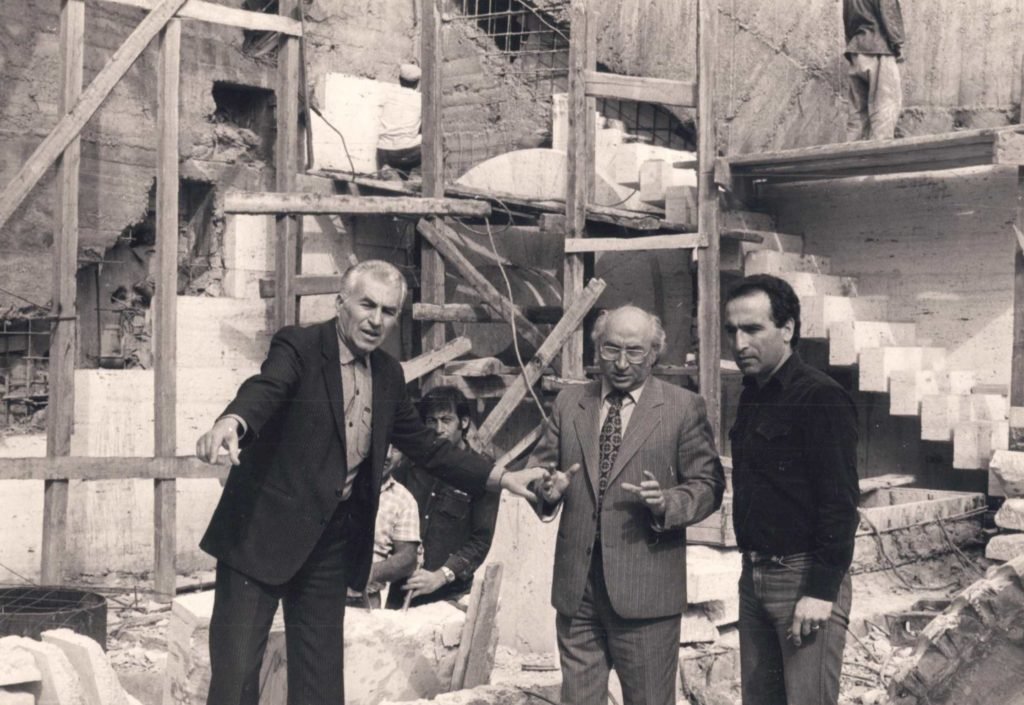
“My father wanted to do everything for his people,” said Seda Khanjyan, looking back fondly. “Those were very thrilling years.”

In 1992, he began to paint in the first hall of the Cascade, using the tempera technique. Each piece of cardboard that bore his sketches was individually placed on the wall. “One by one he would remove the cardboard and draw the corresponding image, and then he would paint them,” explained Seda.
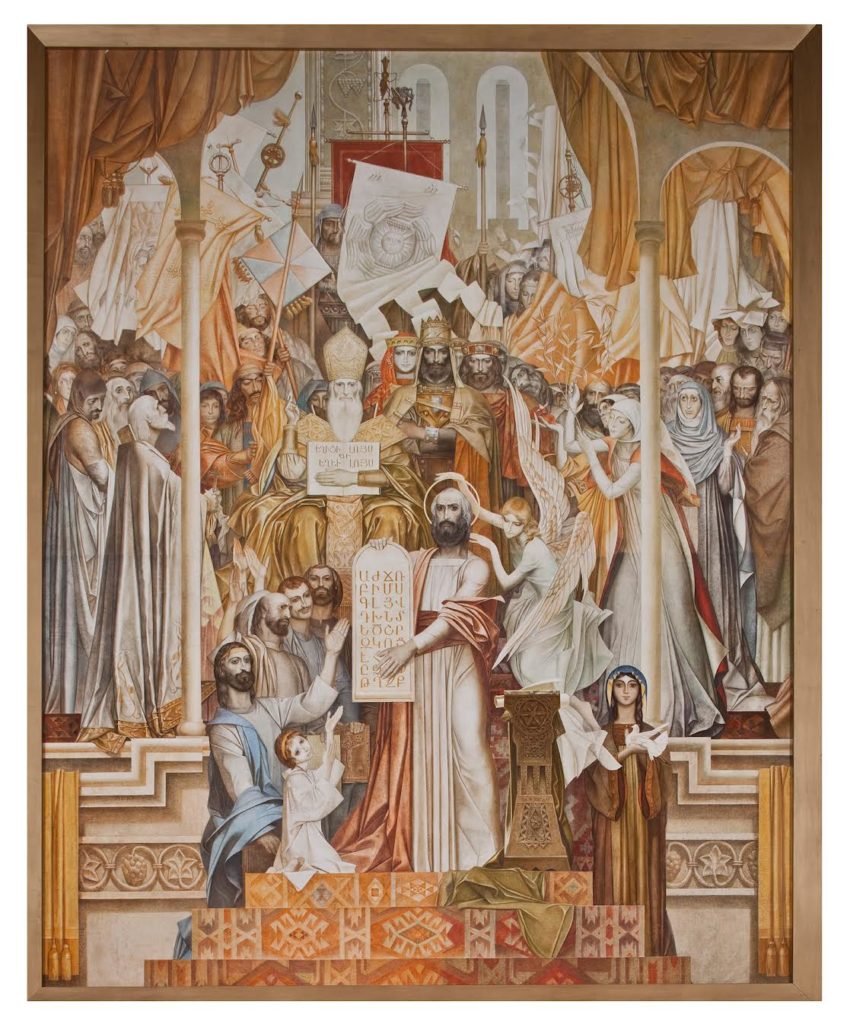
Khanjyan finished “The Creation of the Armenian Alphabet” in 1994 and then began working on “Vardanank,” which he completed in 1998. He worked on his final installment, “The Rebirth of Armenia,” from 1998 until 2000.
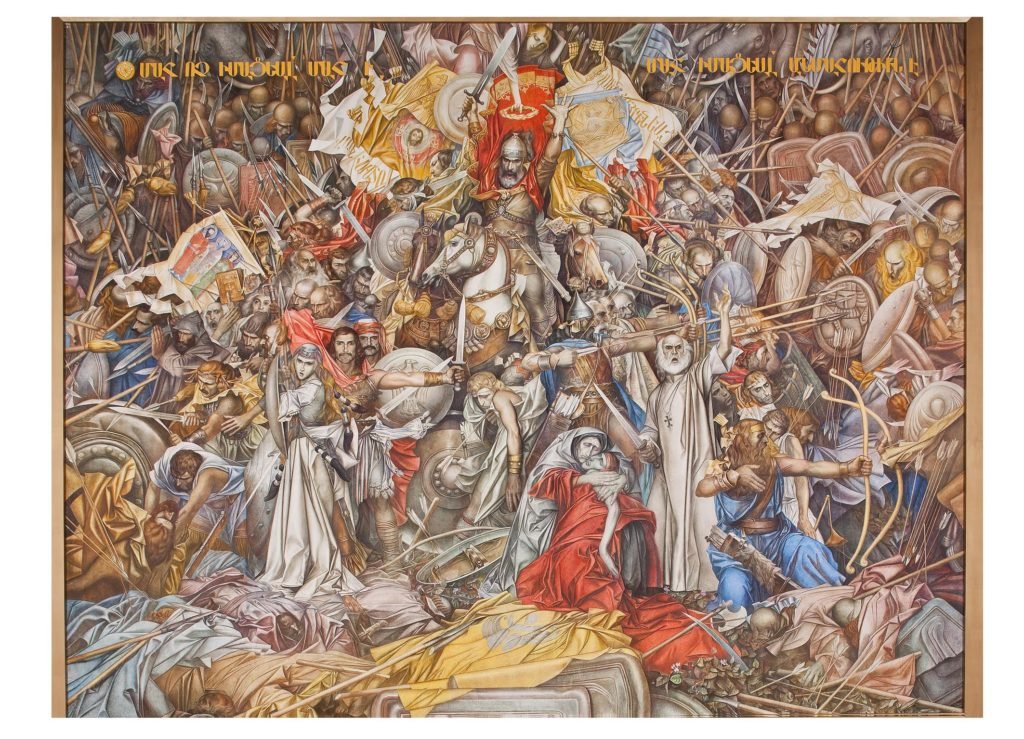
This massive three-part project was challenging in and of itself, but the added complications of the time period made the process grim, as the Soviet Union was in the midst of complete collapse and the entire system of government seemed to be non-existent.

Khanjyan worked alone in unthinkable conditions. It was freezing. There was no electricity, and supplies were scarce. He was also suffering from underlying health issues, and his eyesight was failing. The death of his wife Jemma in 1997 was a painful loss, and the heartbreak impacted him greatly. Despite these difficulties, he was determined, working quickly and without compensation.
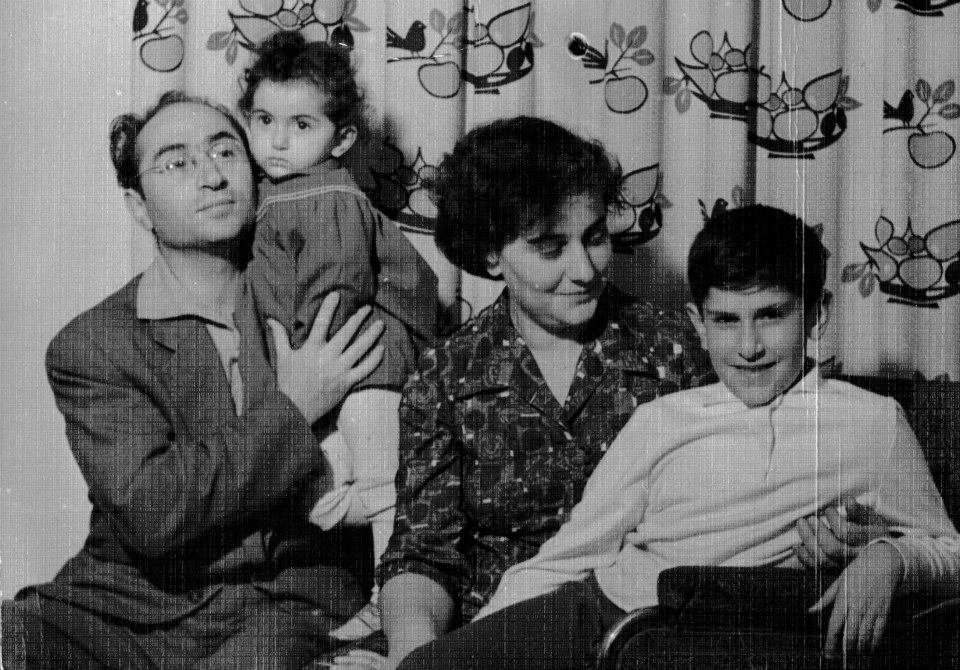
But alas, his final mural “The Rebirth of Armenia” was left unfinished. Khanjyan died on April 19, 2000. He was the only working artist in the halls of the Cascade, as others left due to the conditions and lack of recompense. But Khanjyan remained until his last day, selflessly serving the Armenian people.
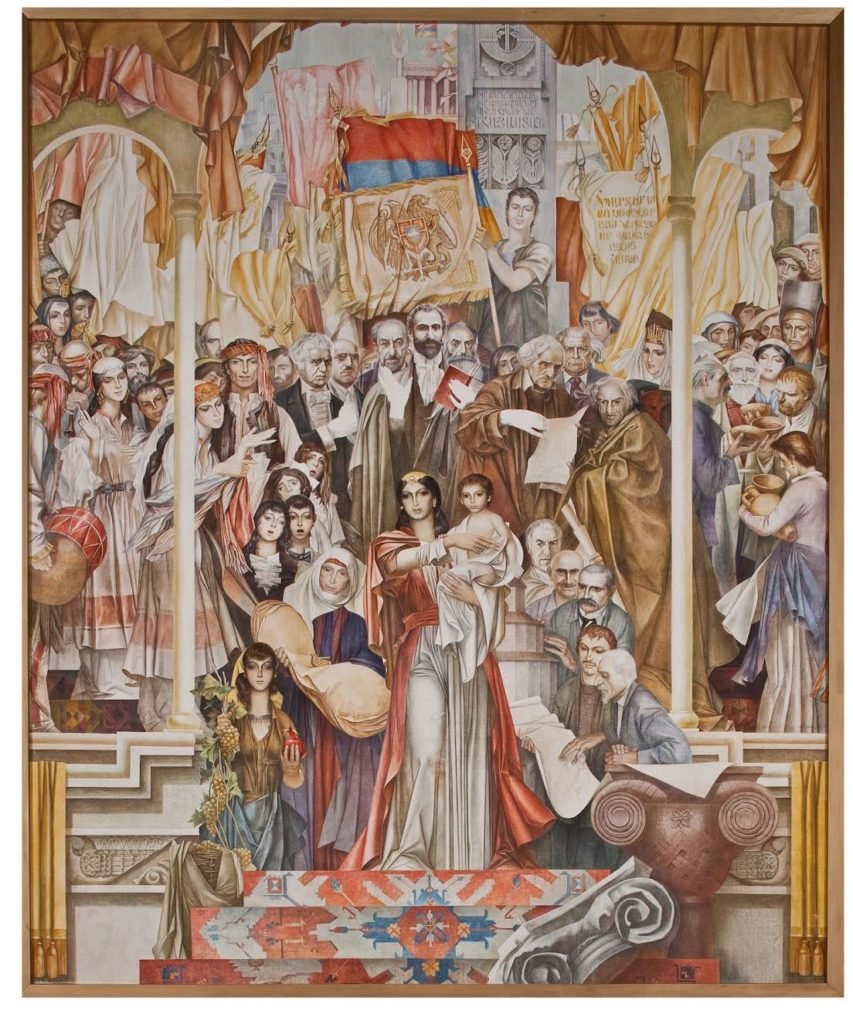
After his death, more complications would arise. While artist Henrik Mamyan resumed work on “The Rebirth of Armenia” using Khanjyan’s sketches, there were conversations of reconstructing the Cascade’s first hall into offices, building over the late artist’s murals. This was a looming fear for the Khanjyan family and the intellectual community until Gerard Cafesjian decided to purchase the Cascade. At first, Cafesjian didn’t know the scale of Khanjyan’s art in the hall of the Cascade and had planned to remove it. Fortunately, he changed his mind once he learned about the invaluable piece.
In 2002, the mural was carefully boarded up during a seven year reconstruction phase. The Cascade was then renamed Cafesjian Center for the Arts, and the hall housing the murals was named Khanjyan Gallery.
The Cafesjian Center for the Arts is one of the most popular places in Yerevan and a hotspot for art. It also serves as a setting for hosting high-profile visitors, like then-Secretary of State Hillary Clinton in 2010, and more recently, outgoing US House Speaker Nancy Pelosi, whose round-table meeting with Armenian civil society leaders during her official visit in September was enveloped by Khanjyan’s masterpiece.
Khanjyan is the pride of the Armenian people and the pinnacle of Armenian artistry. His tireless efforts for his country are forever preserved in his creative works. His paintbrush captured the spirit of the highlands and the beauty of its people. The Armenian nation is indebted to Khanjyan for his great contributions to history. His works will lead Armenians through century after century as a beacon of artistic inspiration.



Wonderful article– thank you!
Well done. I remember visiting him in winter while he was working on his last mural in that hall in Cascade. He was wearing wool gloves with open fingers and an electric heater on the ground that was barely making a difference in the freezing hall. Later that year, I invited him to deliver the Baccalaureate Service talk to our graduating class at the American University of Armenia. It was a great analysis of how things were in Armenia at the time and where we should be heading. One of our Great Armenians of all times.